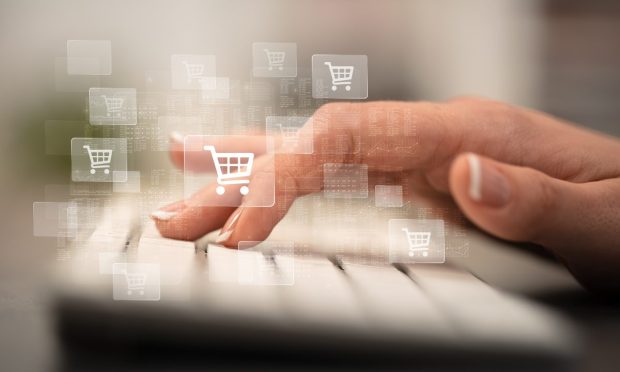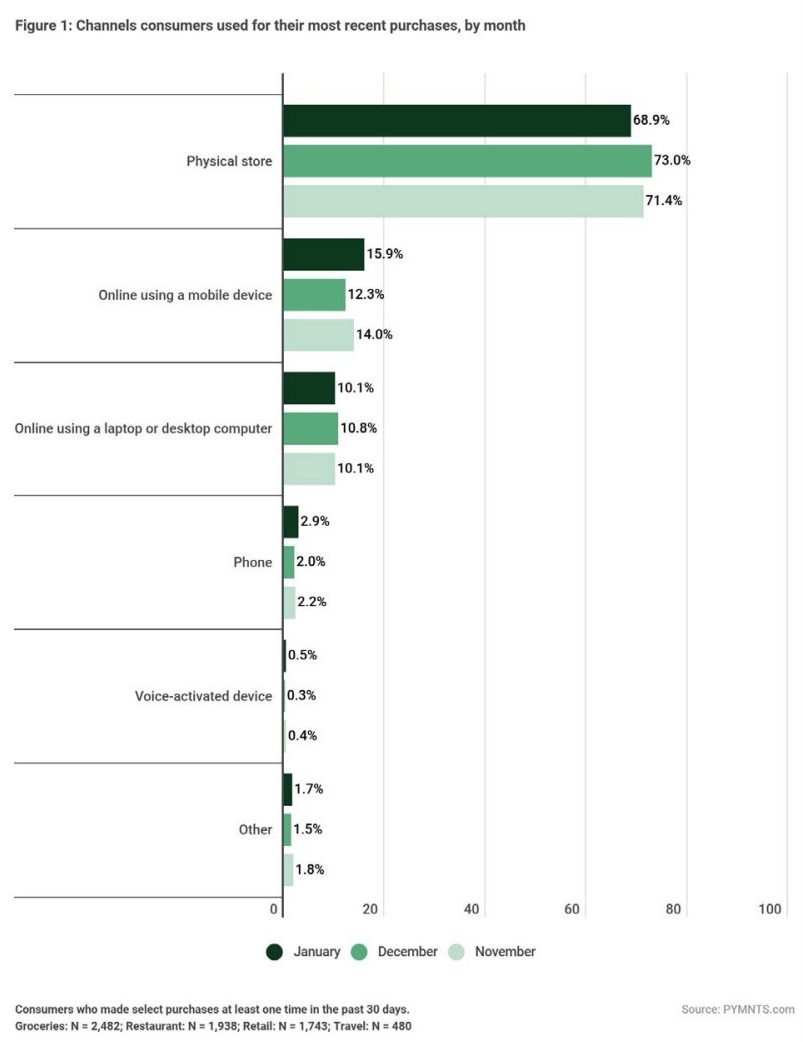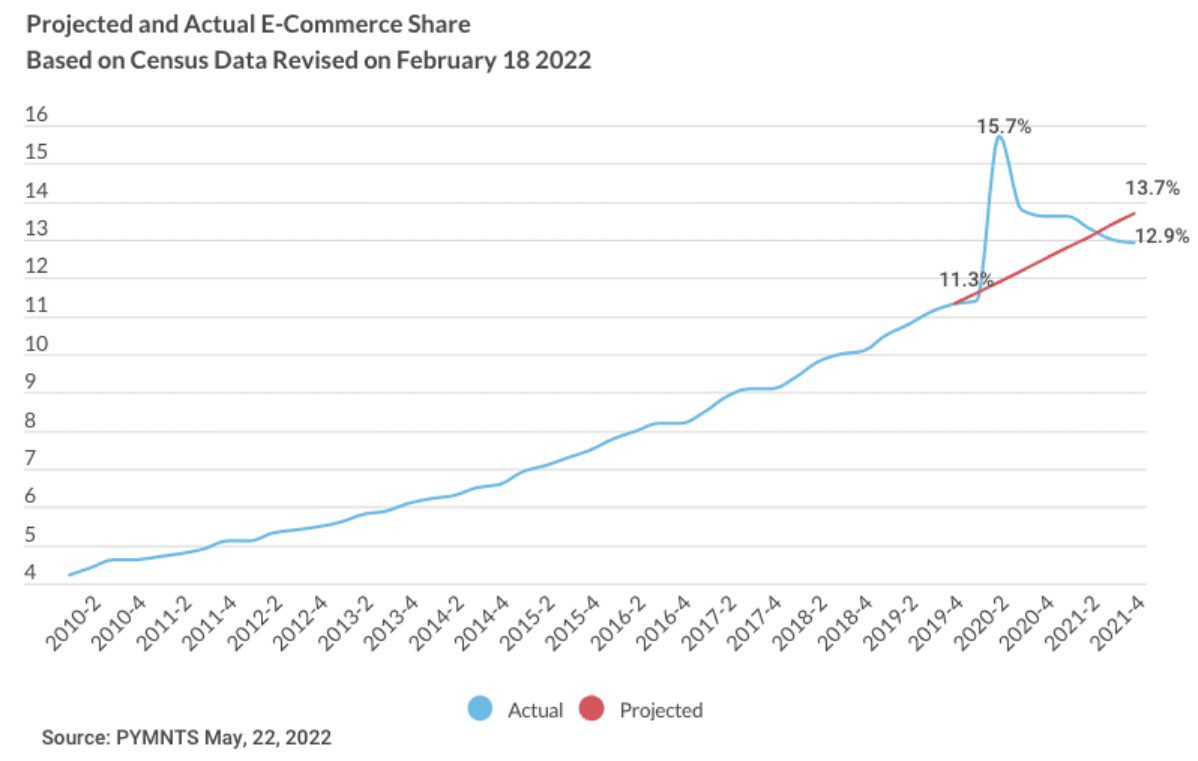Recap H1 2022: eCommerce Trajectory Holds Up During COVID Recovery

Revisiting a rollercoaster first half of 2022 and looking ahead at how the connected economy will progress without a pandemic nipping at its heels, eCommerce is the natural starting point as we anxiously await second-quarter earnings to see what impact changing consumer habits will have on those financials.
Looking at months of data collected and analyzed by PYMNTS since January, together with government data, we see a digital shift that is not only resilient but enduring, now forming new patterns of engagement as COVID-19 fears evaporate and the return to in-person working, shopping and dining gains force.
Tracking consumer behavior in what looks more and more like a genuine post-pandemic economy, PYMNTS’ study series, “Digital Economy Payments,” kicked off in February with a post-holiday survey of over 2,600 U.S. consumers, finding that the return to physical stores that marked holiday 2021 shopping season had tempered, with consumers heading back online by January.
In the resulting report, Digital Economy Payments February 2022 U.S. Edition: U.S. Consumers And The Post-Holiday Digital Shopping Ramp-Up, we found that 26% of consumers were using online and mobile channels to make purchases in January, up from 23% in December, with one-third of retail product purchases made through online channels, and 21% of food purchases.
See the study: Digital Economy Payments February 2022 U.S. Edition
Those findings were contradicted by Census Bureau data also released in February, which showed that online sales as a percentage of all holiday retail sales came in at 12.9%.
Those figures reverberated throughout commerce, casting doubt on the true strength of eCommerce and throwing cold water on the notion that a lasting digital shift had occurred, as opposed to a series of clever stopgaps only meant to last through the public health emergency.
A Revelatory Revision
When Census released its revised figures on May 19, the picture changed considerably, showing that online sales were 14.5%, “a full 1.6 percent points higher than the 12.9% Census reported in February. And at least so far, their revised data shows that online hasn’t given up the boost it got from the pandemic,” as PYMNTS’ Karen Webster wrote of the revised Census data.
In fact, Webster’s own analysis goes on to show that given historical annual growth — without any pandemic push at all — eCommerce share should have been in the vicinity of 13.7%, proving the effect of the digital shift, and with share to spare given the 14.5% figure.
Combining the revised Census data with our own survey data from that period, PYMNTS concluded that first-quarter 2022 online sales as a percentage of overall retail totaled a 14.3% share.
See also: Revised Census Data Shows eCommerce Share Didn’t Plummet After All
While there is a reset of sorts happening, eCommerce and digital ordering for home delivery and curbside or in-store pickup are conveniences that fit neatly into the lives of consumers returning to pre-pandemic life routines from going to the office to spending less time at home.
Webster wrote of the statistical imbroglio, “The Census data also seemed antithetical to the monthly Census-balanced studies of consumers’ digital behaviors that PYMNTS had been capturing and reporting since March 6, 2020.”
“What our data showed was consumers returning to the physical world, but continuing their activities in the digital world as well: ordering ahead using their mobile devices to pickup in store, ordering groceries online yet still shopping in grocery stores for grocery items, eating out at restaurants while still ordering food from aggregators to eat at home,” Webster said.
With Q2 2022 now coming to a close, we’re expecting more changes to pandemic patterns, with the caveat that all evidence continues to point to more than a shift and toward a digital transformation in how we now live, eat, work, pay and get paid.

